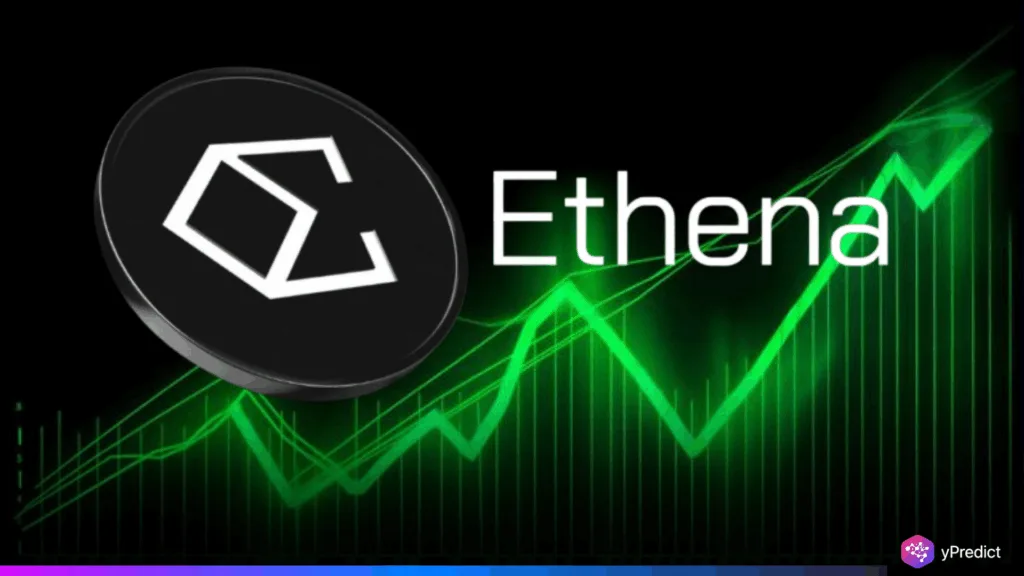
Ethena’s USDe stablecoin has recorded a major upswing, witnessing a 75% jump in market cap to reach $9.3 billion in just three weeks. The rise has pushed USDe into the top three stablecoins globally, overtaking long-standing competitors. This stablecoin surge is driven by USDe’s AI-enhanced delta-hedging model and synthetic dollar structure. Unlike traditional fiat-backed tokens, USDe operates through crypto-native strategies that balance spot and futures positions across assets like Bitcoin, Ethereum, and Solana. As institutional players take note, Ethena’s approach is rapidly redefining what a modern stablecoin can achieve in an AI-driven financial landscape.
AI-Powered Hedging Behind USDe’s Rise
At the core of USDe’s expansion lies a uniquely automated delta-hedging system. Ethena has trained AI models to manage exposure across major cryptocurrencies, primarily Bitcoin, Ethereum, and Solana. These intelligent systems continuously monitor funding rates and rebalance asset positions, allowing USDe to maintain dollar parity through synthetic means. Unlike USDT or USDC, which rely on fiat reserves, the Ethena USDe token thrives on algorithmic risk management and smart contract-backed liquidity pools.
By merging predictive analytics with real-time data, Ethena’s AI modules detect volatility spikes and proactively shift hedging tactics. This has improved investor confidence while sustaining a low deviation from its peg, a key factor behind the recent stablecoin surge.
Synthetic Dollar Model Gains Market Confidence
Ethena’s synthetic dollar framework is gaining popularity due to its fully crypto-native structure. Rather than depending on traditional banks or treasuries, USDe leverages liquid stablecoins and derivatives. AI tools optimize futures positions to mimic the effect of holding physical dollars but with greater on-chain flexibility.
Not only does this methodology take out fiat exposure, but it also reduces the risk of centralized custody for the ecosystem. Of course, the AI will manipulate the synthetic holdings as the market moves to provide a dollar equal to that which is consistent over time. Institutional interest is rising, especially for firms looking to diversify out of fiat-backed assets while preserving volatility.
Compliance Moves Strengthen Institutional Adoption
Ethena’s growth isn’t purely technical. The team has introduced a compliance-friendly version, USDtb, aligned with the U.S. GENIUS Act. AI governance modules help ensure that transaction behaviors align with evolving regulations. The project’s recent integration with Anchorage Digital, a federally chartered crypto custodian, has also reinforced its appeal among institutions.
These partnerships add legal structure to the Ethena USDe offering while allowing AI protocols to continue managing liquidity and hedging in real-time. As traditional finance firms explore blockchain applications, USDe’s framework is emerging as a compliant yet innovative option — a rare balance in the current regulatory climate.
The Shadow of Terra-Luna and Lessons Learned
While Ethena’s tech stack is advanced, it doesn’t come without scrutiny. Blockchain researchers have flagged potential risks in relying on funding rates — a lesson learned painfully during the Terra-Luna crash of 2022. However, Ethena’s AI systems differ by dynamically managing risk exposure and halting certain operations under stress conditions. These safeguards, powered by intelligent contract execution and AI-led monitoring, aim to prevent the runaway loops that doomed earlier synthetic dollar projects. Despite this, observers remain cautious about how USDe will behave in prolonged market downturns. Ethena USDe’s rapid rise signals a shift in the stablecoin narrative. With AI steering its delta-hedging and synthetic dollar systems, the project is blending innovation with practical market applications.






